Stage Door Canteen

Brief Synopsis
Cast & Crew
Frank Borzage
Judith Anderson
Kenny Baker
Tallulah Bankhead
Ralph Bellamy
Edgar Bergen
Film Details
Technical Specs

Synopsis
During World War II, soldiers "Dakota" Ed Smith, "California," "Tex" and "Jersey" ride a train bound for New York, where they will be shipped out. California, a naïve small-town boy, befriends Dakota, who has no family. When the soldiers arrive in New York, they are given twenty-four hours leave, and all end up at the Stage Door Canteen, a restaurant for servicemen operated by many famous personalities. Included in the Canteen's guidelines is the fact that female hostesses are not allowed to make dates with soldiers from the Canteen. The soldiers are surprised to meet comedian Ed Wynn checking hats, actor Alan Mowbray waiting tables and George Raft washing dishes. Aspiring actress Eileen volunteers as a hostess and meets Dakota, while her roommate Jean sits with California, and Ella Sue meets fellow Southerner Tex. Jersey, meanwhile, visits his fiancée Mamie in New Jersey. The next day, the soldiers are given more leave and Jersey gets permission from his commanding officer to marry Mamie, while the rest of the soldiers return to the Canteen. Although Dakota likes Eileen, he is put off by her snobbery and leaves. A battalion of Marines is ordered to ship out that night, and everyone joins in a chorus of "The Marines' Hymn" to show their support. Jean, delighted by California's sweet nature, agrees to be his "number one girl," and the next day at camp, Mamie arrives to marry Jersey. That same day, Eileen is thrilled when she gets a lead role in a play opposite Paul Muni, but her excitement is diminished by the realization that she genuinely loves Dakota, whom she has offended. That night at the Canteen, soldiers are entertained by Ethel Waters and the Count Basie Orchestra, and by a performance by renowned stripper Gypsy Rose Lee, among others. California sneaks in his first kiss ever with Jean. Despite regulations, Eileen and Dakota meet that night outside her apartment and become engaged. Because of this, Eileen is barred from the Canteen for breaking their rules. When actress Katharine Hepburn learns that the couple did not just date but became engaged, she bends the rules and allows Eileen in so that she can meet Dakota. Unfortunately, Dakota and his friends have all been shipped out, but an Australian soldier delivers a message from him that he wants to marry Eileen on his return. Hepburn gives the tearful Eileen a stern talk about supporting all the soldiers even though she misses Dakota, and Eileen returns to work in the Canteen.

Director

Frank Borzage
Cast

Judith Anderson

Kenny Baker

Tallulah Bankhead

Ralph Bellamy

Edgar Bergen

Ray Bolger

Ina Claire
Katharine Cornell

Gracie Fields

Lynn Fontanne

Helen Hayes

Katharine Hepburn

Hugh Herbert

Jean Hersholt
George Jessel

Gypsy Rose Lee

Alfred Lunt

Harpo Marx
Elsa Maxwell
Yehudi Menuhin

Ethel Merman
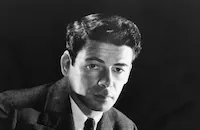
Paul Muni

Merle Oberon

George Raft
Lanny Ross

Martha Scott

Ethel Waters

Johnny Weissmuller
Ed Wynn
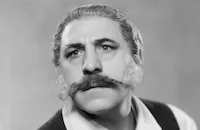
Henry Armetta
Benny Baker

Helen Broderick
Lloyd Corrigan
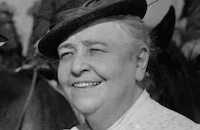
Jane Darwell

William Demarest
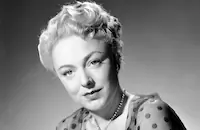
Virginia Field
Vinton Freedley

Ann Gillis
Lucille Gleason
Vera Gordon

Virginia Grey

Sam Jaffe

Allen Jenkins
Roscoe Karns

Tom Kennedy

Otto Kruger
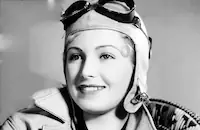
June Lang
Betty Lawford
Bert Lytell

Aline Macmahon
Horace Macmahon
Helen Menken
Peggy Moran

Ralph Morgan
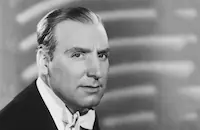
Alan Mowbray

Elliott Nugent
Patrick O'moore
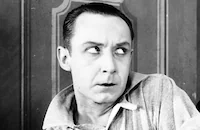
Franklin Pangborn

Helen Parrish
Brock Pemberton

Selena Royle
Marion Shockley

Cornelia Otis Skinner

Ned Sparks
Bill Stern

Arleen Whelan
Dame May Whitty
Count Basie

Xavier Cugat
Benny Goodman

Kay Kyser
Guy Lombardo
Freddy Martin
Cheryl Walker
William Terry
Marjorie Riordan
Lon Mccallister

Margaret Early
Michael Harrison
Dorothea Kent
Fred Brady

Peggy Lee

Lina Romay
Sully Mason
Harry Babbitt
Julie Conway
Trudy Irwin
Jack Max
Helene Dumas
Dorothy Fields

Arlene Francis
Virginia Kaye
Marion Moore
Elizabeth Morgan
Crew
C. Bakaleinikoff
Irving Berns
Frank Borzage
Lew Borzage
Barney Briskin
James Campbell
Reginald Connelly
Cy Corbin
Mann Curtis
Delmer Daves
Albert Deano
Al Dubin
Victor Gangelin
Radie Harris
Lorenz Hart
Virgil Hart
Al Hoffman
Harry Horner
Hal Kern
Sol Lesser
Sol Lesser
Jerry Livingston
Albert Hay Malotte
Joe Mccoy
Hugh Mcdowell
Billy Meyers
Harry Miller
James V. Monaco
Ray Noble
Jacques Offenbach
Joe Pasumy
Hans Peters
Jack Pettis
Robert Reed
Freddie Rich
Nikolay Rimsky-korsakov
Richard Rodgers
Elmer Schoebel
Franz Schubert
Castro Valencia
Harry Wild

Photo Collections
Film Details
Technical Specs

Award Nominations
Best Score
Best Song
Articles
Stage Door Canteen (1943) - Stage Door Canteen
The canteen concept was originally conceived by members of the entertainment industry during the turbulent days of World War II as a community service for America's servicemen. The Hollywood Canteen in Los Angeles was created for soldiers shipping out for service from the West coast while the Stage Door Canteen in the Big Apple served military men sailing or flying out from the East coast. Designed as welcoming centers where servicemen could enjoy a good meal served by a celebrity, hear music from a popular band or orchestra, and dance with a famous actress, the canteens did their part to boost the morale of America's fighting men. Often the last stateside face a soldier might see was a famous star or entertainer he met at the canteen. And Stage Door Canteen is a great snapshot of this unique soldiers' club.
By today's standards, the film is unashamedly sentimental, corny and relentlessly patriotic. The romance between the actress and the soldier isn't very compelling and the performances by Cheryl Walker and William Terry are bland. On the other hand, the film does a great job of documenting the nightly atmosphere of the canteen; the excitement of the soldiers as they enter the club, the spontaneous interaction of men and women on the dance floor (dig that crazy jitterbugging couple!), the odd sight of a famous actor serving coffee or bussing tables.
Equally interesting is the way the film pays tribute to America's war allies by staging various scenes with American soldiers interacting with their Russian, Chinese, Australian, and British counterparts. One of the more awkward sequences occurs when a group of Chinese fighter pilots are hoisted up on the shoulders of American soldiers and paraded through the canteen in a show of solidarity while the orchestra strikes up "The Chinese Fighting March" (every American orchestra knows it by heart, right?). Just prior to this, we are witness to some comic bantering between the two groups that would now be condemned by the politically correct. For example, a U.S. serviceman says to the Chinese flyer, "Too bad we don't have any chop suey for you Chinese boys, I reckon." The Chinese pilot's semi-sarcastic rebuttal is "I'm thinking of introducing chop suey to China when I get back as the latest American novelty." And there are other unexpected but humorous culture clashes on the canteen floor.
The best reason to endure all 135 minutes of Stage Door Canteen is for the staggering number of celebrities and entertainers who are paraded across the screen during the course of the film. You'll catch glimpses of Tallulah Bankhead, George Raft, Paul Muni, Broadway theatre legends Alfred Lunt and Lynn Fontanne, Merle Oberon, Dame May Whitty and Ralph Bellamy. But the real highlights include a very young Peggy Lee performing "Why Don't You Do Right?" with Benny Goodman and His Orchestra, Ethel Waters singing "Quicksand" to the accompaniment of Count Basie and His Orchestra, rhumba king Xavier Cugat's rendition of "She's a Bombshell," a classical music segment featuring violin virtuoso Yehudi Menuhin, Gypsy Rose Lee doing a stylish striptease and a brief cameo by Harpo Marx in pursuit of a terrified hostess.
There are plenty of memorably odd moments as well. Ethel Merman slams home a completely forgettable tune through the sheer force of her personality while Dame Judith Anderson makes an unlikely hostess, gamely trying to convince the boys that she really isn't like that creepy Miss Danvers from Rebecca (1940). Katharine Hepburn shows up toward the end to give a keep-a-stiff-upper-lip speech to our heartbroken heroine and there's also a surprising "gay" moment between Franklin Pangborn and Johnny Weissmuller in the kitchen as they wash dishes. Weissmuller decides it's too hot to work in his shirt and strips down, prompting Pangborn to glance at Weissmuller's chest and then pound his own, imitating the famous Tarzan yell.
Stage Door Canteen was produced by Sol Lesser for United Artists and designed as a huge benefit show, with eighty-six and a half percent of the profits going to the American Theatre Wing to establish additional canteens across the U.S. Director Frank Borzage shot half the film in New York and half in Los Angeles in order to accommodate actors who were starring in Broadway productions. The film was not the only one of its kind, however, and Warner Brothers produced two similar features - This is the Army (1943) and Hollywood Canteen (1944) - with all proceeds going to Army relief. During the 1943 Oscar race, Stage Door Canteen received two Academy Award nominations; one for Best Music Score and one for Best Song, "We Mustn't Say Goodbye."
Producer: Sol Lesser
Director: Frank Borzage
Screenplay: Delmer Daves
Art Direction: Hans Peters
Cinematography: Harry J. Wild
Editing: Hal Kern
Music: James V. Monaco, Freddie Rich Cast: Cheryl Walker (Eileen), William Terry (Ed "Dakota" Smith), Marjorie Riordan (Jean Rule), Lon McCallister ("California"), Margaret Early (Ella Sue), Michael Harrison ("Texas"), Dorothea Kent (Mamie).
BW-131m.
by Jeff Stafford

Stage Door Canteen (1943) - Stage Door Canteen
Stage Door Canteen - STAGE DOOR CANTEEN - A Blast From the Past on DVD
The canteen concept was originally conceived by members of the entertainment industry during the turbulent days of World War II as a community service for America's servicemen. The Hollywood Canteen in Los Angeles was created for soldiers shipping out for service from the West coast while the Stage Door Canteen in the Big Apple served military men sailing or flying out from the East coast. Designed as welcoming centers where servicemen could enjoy a good meal served by a celebrity, hear music from a popular band or orchestra, and dance with a famous actress, the canteens did their part to boost the morale of America's fighting men. Often the last stateside face a soldier might see was a famous star or entertainer he met at the canteen. And STAGE DOOR CANTEEN is a great snapshot of this unique soldiers' club.
By today's standards, the film is unashamedly sentimental, corny and relentlessly patriotic. The romance between the actress and the soldier isn't very compelling and the performances by Cheryl Walker and William Terry are too bland. On the other hand, the film does a great job of documenting the nightly atmosphere of the canteen; the excitement of the soldiers as they enter the club, the spontaneous interaction of men and women on the dance floor (dig that crazy jitterbugging couple!), the odd sight of a famous actor serving coffee or busing tables. Also interesting is the way the film pays tribute to America's war allies by staging various scenes with American soldiers interacting with their Russian, Chinese, Australian, and British counterparts. One of the more awkward sequences occurs when a group of Chinese fighter pilots are hoisted up on the shoulders of American soldiers and paraded through the canteen in a show of solidarity while the orchestra strikes up "The Chinese Fighting March" (every American orchestra knows it by heart, right?). Just prior to this, we are witness to some comic bantering between the two groups that would now be condemned by the politically correct. For example, a U.S. serviceman says to the Chinese flyer, "Too bad we don't have any chop suey for you Chinese boys, I reckon." The Chinese pilot's semi-sarcastic rebuttal is "I'm thinking of introducing chop suey to China when I get back as the latest American novelty." And there are other unexpected though humorous culture clashes on the canteen floor.
But the best reason to endure all 135 minutes of STAGE DOOR CANTEEN is for the staggering number of celebrities and entertainers who are paraded across the screen during the course of the film. You'll catch glimpses of Tallulah Bankhead, George Raft, Paul Muni, Broadway theatre legends Alfred Lunt and Lynn Fontanne, Merle Oberon, Dame May Whitty and Ralph Bellamy. But the real highlights include a very young Peggy Lee performing "Why Don't You Do Right?" with Benny Goodman and His Orchestra, Ethel Waters singing "Quicksand" to the accompaniment of Count Basie and His Orchestra, rhumba king Xavier Cugat's rendition of "She's a Bombshell," a classical music segment featuring violin virtuoso Yehudi Menuhin, Gypsy Rose Lee doing a stylish striptease and a brief cameo by Harpo Marx in pursuit of a terrified hostess. There are plenty of memorably odd moments as well. Ethel Merman slams home a completely forgettable tune through the sheer force of her personality while Dame Judith Anderson makes an unlikely hostess, gamely trying to convince the boys that she really isn't like that Miss Danvers from Rebecca (1940). Katharine Hepburn shows up toward the end to give a keep-a-stiff-upper-lip speech to our heartbroken heroine and there's also a surprising "gay" moment between Franklin Pangborn and Johnny Weissmuller in the kitchen as they wash dishes. Weissmuller decides it's too hot to work in his shirt and strips down, prompting Pangborn to glance at Weissmuller's chest and then pound his own, imitating the famous Tarzan yell.
STAGE DOOR CANTEEN was produced by Sol Lesser for United Artists and designed as a huge benefit show, with eighty-six and a half percent of the profits going to the American Theatre Wing to establish additional canteens across the U.S. Director Frank Borzage shot half the film in New York and half in Los Angeles in order to accommodate actors who were starring in Broadway productions. The film was not the only one of its kind, however, and Warner Brothers produced two similar features - This is the Army (1943) and Hollywood Canteen (1944) - with all proceeds going to Army relief.
The DVD of STAGE DOOR CANTEEN is struck from the original 35mm nitrate camera negative. The visual quality, despite some minor print damage and some occasional rough splices, is perfectly acceptable and quite preferable to the countless video dupes of the film that have been circulating since the title fell into the public domain some while ago. Unfortunately, the disk contains no extras and offers only 8 chapters listed by featured band. For a film that runs 135 minutes, you'd expect at least 24 chapters so you could more easily peruse the many guest stars who appear.
For more information about STAGE DOOR CANTEEN, visit the distributor's web site at Image Entertainment, Inc..
By Jeff Stafford
Stage Door Canteen - STAGE DOOR CANTEEN - A Blast From the Past on DVD
Martha Scott, 1914-2003
Martha Ellen Scott was born in Jamesport, Missouri on September 24, 1914, and raised in Kansas City, where a high school teacher encouraged her interest in acting. She majored in drama at the University of Michigan and after graduation, she joined The Globe Theatre Troupe, a stock company that performed truncated Shakespeare at the Chicago World's Fair in between 1933-34. She went to New York soon after and found work in radio and stock before playing making her breakthrough as Emily Webb in Our Town. When the play opened on Broadway in February 1938, Scott received glowing reviews in the pivotal role of Emily, the wistful girl-next-door in Grovers Corners, New Hampshire, who marries her high school sweetheart, dies in pregnancy and gets to relive a single day back on Earth. Her stage success brought her to Hollywood, where she continued her role in Sam Wood's film adaptation of Out Town (1940). Scott received an Academy Award nomination for best actress and was immediately hailed as the year's new female discovery.
She gave nicely understated performances in her next few films: as Jane Peyton Howard in Frank Lloyd's historical The Howards of Virginia (1940), opposite Cary Grant; the dedicated school teacher in Tay Garnett's Cheers for Miss Bishop (1941) in which she aged convincingly from 17 to 85; and as a devoted wife to preacher Frederic March in Irving Rapper's warm family drama One Foot in Heaven (1941). Sadly, Scott's maturity and sensitivity ran against the glamour-girl persona that was popular in the '40s (best embodied by stars like Lana Turner and Veronica Lake) and her film appearances were few and far between for the remainder of the decade.
Her fortunes brightened in the '50s, when she found roles in major productions, such as a suburban wife trapped in her home by fugitives, led by Humphrey Bogart, in William Wyler's taut The Desperate Hours (1955) and played Charlton Heston's mother in the Cecil B. Demille's The Ten Commandments (1956) and again for William Wyler in Ben-Hur (1959). Scott found steady work for the next 30 years in matronly roles, most notably on television, where she played Bob Newhart's mother on The Bob Newhart Show (1972-1978) and the mother of Sue Ellen Ewing on Dallas (1978-1991). Her second husband, pianist and Pulitzer Prize-winning composer Mel Powell, died in 1998. Survivors include a son and two daughters.
by Michael T. Toole
Martha Scott, 1914-2003
Quotes
Trivia
Notes
The following acknowledgment appeared in the opening credits: "All rights granted by the American Theatre Wing which gratefully acknowledges and credits the producers, stars and members of all the theatrical unions, guilds, crafts and associations for their participation in the creation and continuance of the original Stage Door Canteen." The Stage Door Canteen, located at 44th Street in New York City, was operated during World War II by the American Theatre Wing as a restaurant and nightclub for servicemen. Volunteers working at the Canteen included stars from stage and screen. Although the onscreen credit lists the associate producer as Barney Briskin, various reviews call him "Barnett" Briskin.
According to a news item in New York Times, the interior design of the Stage Door Canteen was reproduced at the Fox Movietone Studio and at RKO Studio in Hollywood, where this film was shot, as shooting in the actual Canteen was difficult. According to an article in Movie Life magazine, producer Sol Lesser paid the Canteen $50,000 for the use of its name, and the Canteen and Allied Charities received the net profit from the film. As noted by an article in New York Times, the Screen Actors Guild adopted a prohibition against "free appearances by actors in charity pictures" shortly before this film was produced. "The rule was adopted because eight cinematic projects were brought to the attention of the Guild's board of directors for which the sponsors made an appeal 'on the basis of patriotism by allocating part or all of the net earnings of the picture to charity.'" The Guild hoped that this ruling would prevent actors' generosity from being exploited.
Hollywood Reporter noted the following about the production: Hollywood Reporter news items reported that Art Arthur was to write the script, and that Paramount considered using Leith Stevens' composition "America Fighting" in the film. In addition, Robert E. Sherwood was hired to write "special patriotic sequences," and Lesser conferred with writer Rachel Crothers about contributing dramatic sequences. The contribution of these writers to the final film has not been determined. Among the performers considered for appearances, but who did not appear in the film were Fredric March, Florence Eldridge, Marlene Dietrich, Billie Burke, Loretta Young, Gladys George, Constance Collier, the Ritz Brothers, Sid Grauman, Patricia Morison and Eddie Cantor. Al Jolson was slated to sing a song by Al Dubin and James Monaco, in a sequence written by William Collier, Sr. In addition, New York Times reported that Gertrude Lawrence and Ilka Chase were slated to appear, and Hollywood Reporter reported that Jack Benny agreed to appear if violinist Jascha Heifetz performed in the film. Some scenes were shot on location at Fort MacArthur, CA. This film was nominated for an Academy Award for Best Music (Scoring of a Music Picture), and for the song, "We Mustn't Say Goodbye."

Miscellaneous Notes
Released in United States 1943
Released in United States 1943














